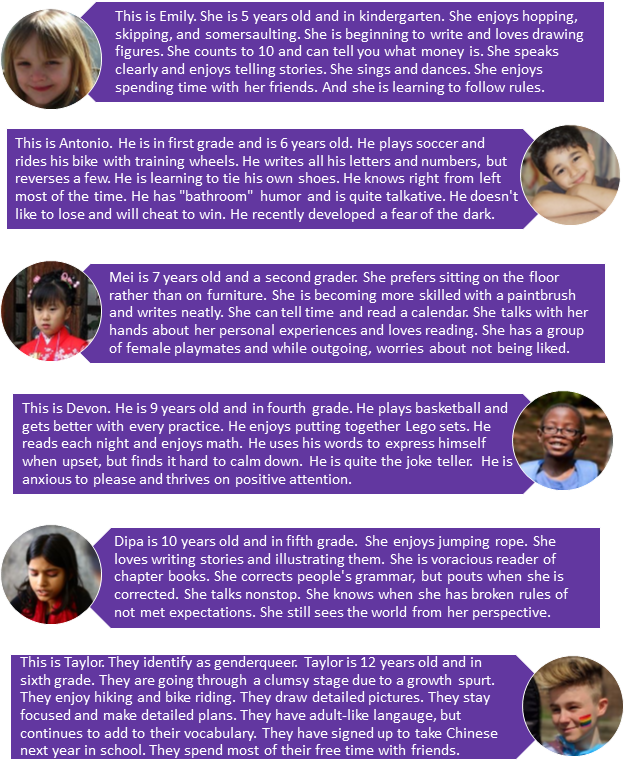16. What Curriculum Looks Like for School-Age Children
Learning Objectives
By the end of the chapter, you should be able to:
- Connect the purpose of school-age care to important aspects of planning curriculum for school-aged children
- Explain how the needs of school-aged children and desired outcomes are met through developmentally curriculum
- Justify the importance of collaboration between educators and children, families, and communities
- Examine the role of reflective practice in curriculum planning
- Define what a holistic approach to curriculum is
- Analyze the value of play in school-age care and curriculum
- Identify ways to plan for the different types and aspects of play
- Discuss the importance of intentionality
- List considerations for planning the environment for school-aged children
- Summarize the role of diversity and the importance of cultural competence in school-aged programs
- Describe how quality curriculum planning meets the five outcomes
- Relate each step of the curriculum planning process
- Differentiate the different roles of the educator
During the school-age years (kindergarten to grade 8), children may be cared for during out-of-school times in a variety of school-age programming. The focus, philosophy, staffing, and location of those programs will vary greatly. This chapter will briefly discuss some information that can be used to create high quality curriculum for children in school-age programming.
But before we get to that, let’s look at what school-age children are like. Meet these school-aged children:


